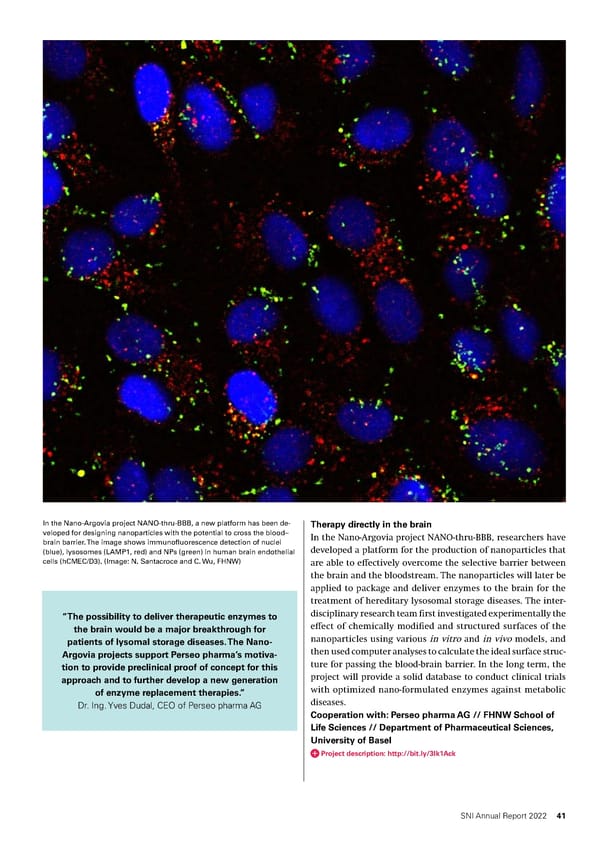In the Nano-Argovia project NANO-thru-BBB, a new platform has been de- Therapy directly in the brain veloped for designing nanoparticles with the potential to cross the blood– In the Nano-Argovia project NANO-thru-BBB, researchers have brain barrier. The image shows immunofluorescence detection of nuclei (blue), lysosomes (LAMP1, red) and NPs (green) in human brain endothelial developed a platform for the production of nanoparticles that cells (hCMEC/D3). (Image: N. Santacroce and C. Wu, FHNW) are able to effectively overcome the selective barrier between the brain and the bloodstream. The nanoparticles will later be applied to package and deliver enzymes to the brain for the treatment of hereditary lysosomal storage diseases. The inter- “The possibility to deliver therapeutic enzymes to disciplinary research team first investigated experimentally the the brain would be a major breakthrough for effect of chemically modified and structured surfaces of the patients of lysomal storage diseases. The Nano- nanoparticles using various in vitro and in vivo models, and Argovia projects support Perseo pharma’s motiva- then used computer analyses to calculate the ideal surface struc- tion to provide preclinical proof of concept for this ture for passing the blood-brain barrier. In the long term, the approach and to further develop a new generation project will provide a solid database to conduct clinical trials of enzyme replacement therapies.” with optimized nano-formulated enzymes against metabolic Dr. Ing. Yves Dudal, CEO of Perseo pharma AG diseases. Cooperation with: Perseo pharma AG // FHNW School of Life Sciences // Department of Pharmaceutical Sciences, University of Basel Project description: http://bit.ly/3Ik1Ack SNI Annual Report 2022 41
 SNI Annual Report 2022 Page 40 Page 42
SNI Annual Report 2022 Page 40 Page 42